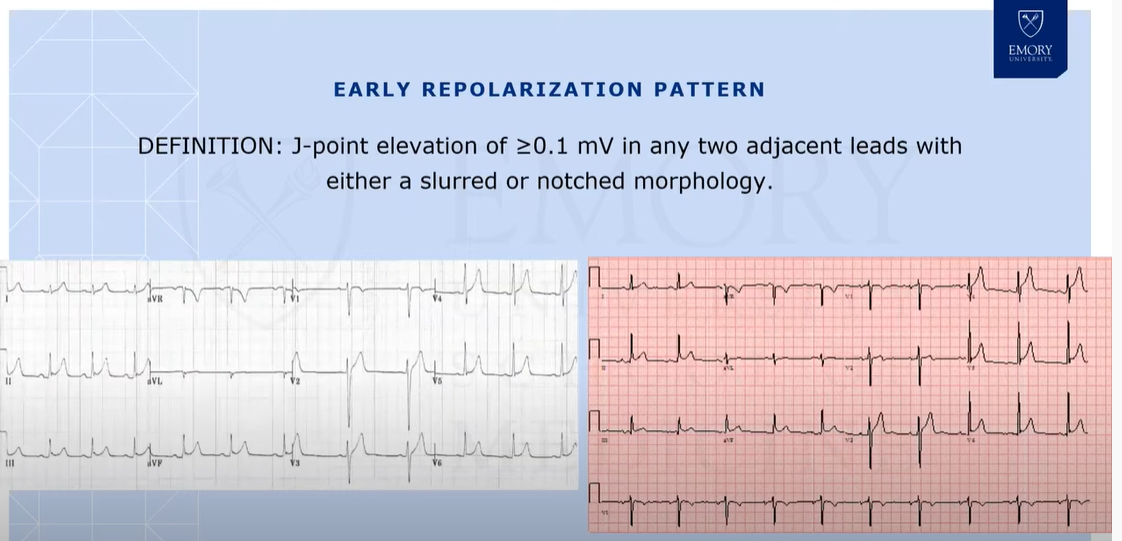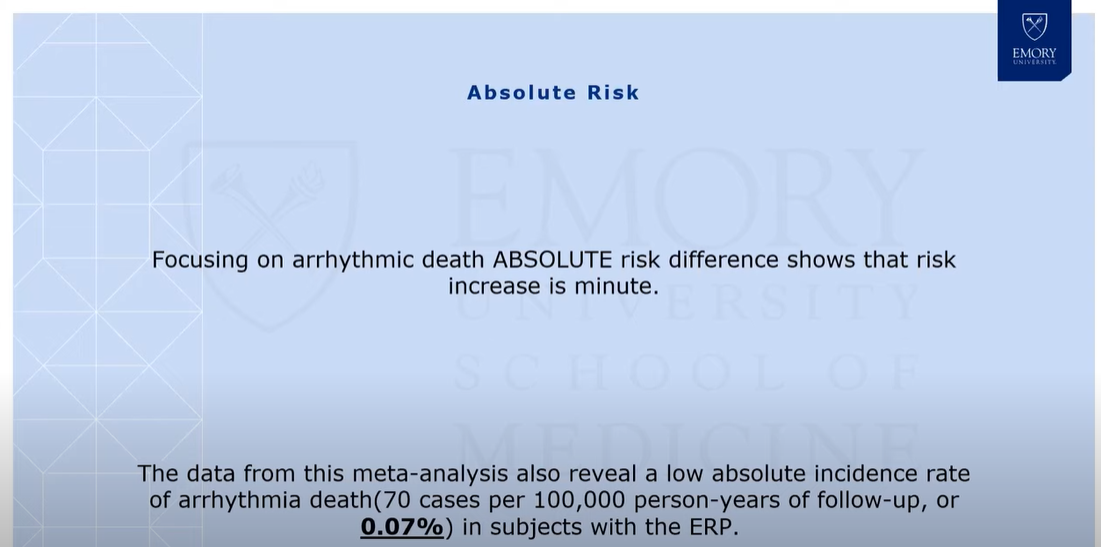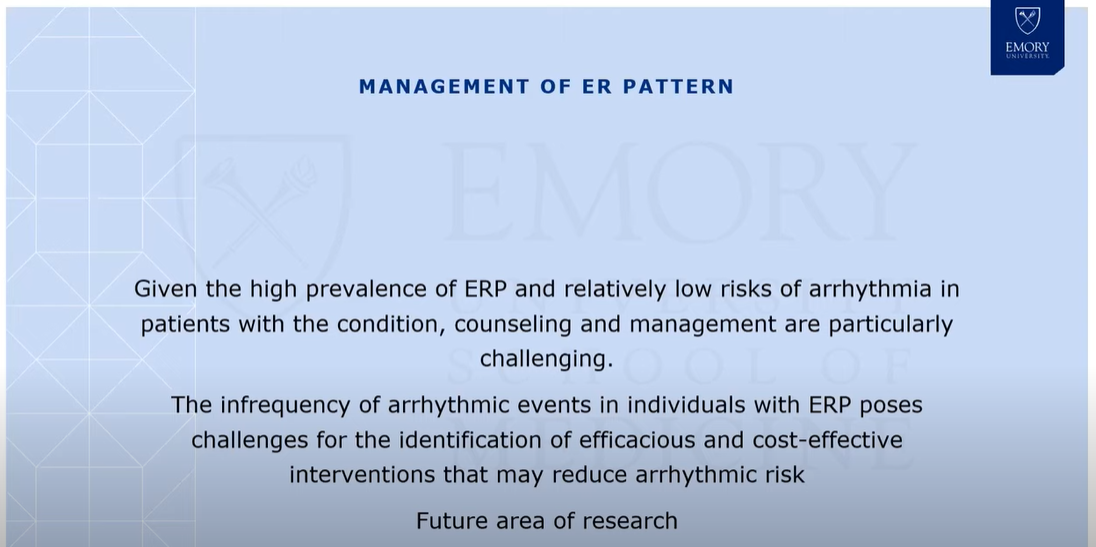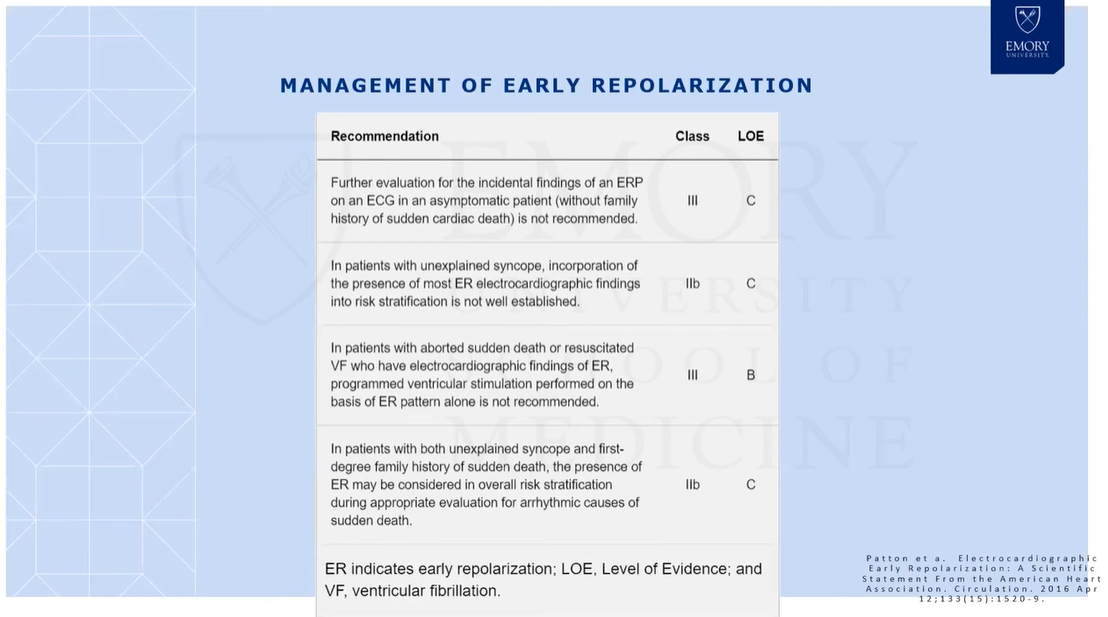Note to myself: I’m not sure of how to approach a patient with early repolarization on ECG who is asymptomatic and who has no family history of sudden death. The AHA scientific statement on early repolarization referenced below didn’t seem to help much. See Overall Risk Assessment/Recommendations for Further Evaluation of the article.
I will consider the referral of this type of patient for cardiology evaluation.
In this post I link to and embed the YouTube video of Early Repolarization Syndrome From Emory Cardiology Friday Fellows Conference 12-17-2021. Speaker: Leonardo M. Knijnik, MD.
In addition to the above resource, please see and review Electrocardiographic Early Repolarization: A Scientific Statement From The American Heart Association [PubMed Abstract] [Full-Text HTML] [Full-Text PDF]. Circulation. 2016 Apr 12;133(15):1520-9.
The early repolarization (ER) pattern (ERP), initially described as elevation of the ST segment of ≥1 leads on the 12-lead ECG, has long been considered a benign phenomenon. However, more recent studies have demonstrated positive, negative, and neutral associations between an ERP and various end points, including all-cause, cardiac, and arrhythmic mortality. These recent studies have used more complex or heterogeneous definitions of ER, including J-wave or J-point elevation and QRS complex notching or slurring, with or without concomitant ST-segment elevation. Other studies have identified an increased prevalence of ERP in survivors of spontaneous ventricular fibrillation (VF) or cardiac arrest.
As a result, considerable confusion remains concerning the definition of ERP, its prognostic significance, and whether additional evaluation or treatment is warranted. These issues are especially important because the prevalence of ERP may be as high as 10% in the general population and even higher in some healthy subgroups. The writing group performed a comprehensive literature search and developed recommendations based on the results of the current literature. We searched MEDLINE (via PubMed), EMBASE, and the Cochrane Library to identify relevant primary scientific articles, guideline statements, and review articles in the literature. Search terms included, but were not limited to, early repolarization, J-point elevation, J wave, Haissaguerre syndrome, sudden cardiac death, idiopathic ventricular fibrillation, ventricular fibrillation, cardiac repolarization reserve, sudden unexplained death syndrome, and Osborn waves. We also reviewed the references of highly cited documents and citing documents. The recommendations were voted on, and 80% agreement was required for inclusion.
The purposes of this document are as follows:
To provide a concise overview of the ER literature, emphasizing variation in definitions of benign and malignant forms of ER
To provide guidance and recommendations to physicians on appropriate recognition and risk management
To identify critical areas for future collaborative research efforts
The following are direct links to the above article.
______________________________________________________________
All that follows below are slides from Early Repolarization Syndrome from Emory Cardiology.









